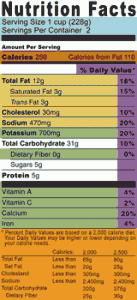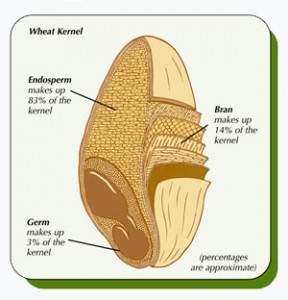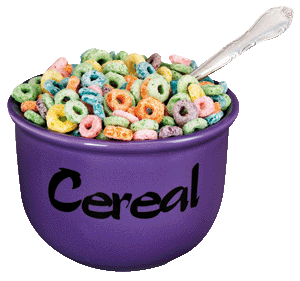 You’ve heard it: Eat some roughage – get some fiber in your diet – fiber will do this, that, and the other thing, too. Is there any truth to the claims?
You’ve heard it: Eat some roughage – get some fiber in your diet – fiber will do this, that, and the other thing, too. Is there any truth to the claims?
You bet there is. Dietary fiber, sometimes called roughage or bulk, comes from comes from plants — whole grains, fruit, and vegetables — but not from dairy, meat, or fish. It isn’t digested so it doesn’t add calories and it passes through your stomach and intestines and out of your body.
What’s So Great About Fiber?
Fiber:
- keeps you regular
- lowers your risk of colon and rectal cancer
- lowers blood cholesterol
- helps control blood sugar levels
- keeps you feeling fuller longer.
Two Types of Fiber
The two types of dietary fiber are insoluble, which tends to be in the peels and husks of plant foods; and soluble, which is in the fleshy interior.
Insoluble fiber, or cellulose, acts like an intestinal broom, increases stool bulk, and encourages movement through your GI tract. Good sources are whole grains, bran, seeds, nuts, zucchini, celery, broccoli, cabbage, onions, tomatoes, carrots, cucumbers, green beans, dark leafy vegetables, fruit, and root vegetable skins.
Soluble fiber, or pectin, dissolves in water and forms a gel – which helps slow down your digestion, delays the emptying of your stomach, makes you feel full, helps stabilize your blood sugar, and interferes with the absorption of dietary cholesterol. Good sources are oats, oat bran, peas, lentils, beans, apples, pears, strawberries, blueberries, citrus fruit, carrots, celery, and cucumbers.
How Much Fiber Should You Eat?
The amount you need is tied to the number of calories you eat and Americans get, on average, only about half of what they should. For healthy adults the USDA recommends 14 grams of fiber for every 1,000 calories and the National Cancer Institute; the National Heart, Lung, Blood Institute; and the American Heart Association all recommend 20-30 grams of (mostly soluble) fiber a day.
To get both types of fiber focus on eating a healthy diet rich in fruit, vegetables, whole grains, legumes, nuts, and seeds. The increased amount of fiber in your diet might cause intestinal gas, but your body will adapt. Be sure to drink plenty of water.
Tips For Getting Fiber Into Your Diet
- Spread your fiber rich foods throughout the day
- Have fiber rich cereal with fruit for breakfast
- Replace refined white bread, pasta, and rice with whole grains
- Eat a lot of vegetables and unpeeled whole fruit
- Have nuts, raw vegetables, fruit, or popcorn for snacks instead of chips or candy
- Add legumes, lentils, beans, seeds, fresh or frozen vegetables, and nuts to your soups, salads, stews, and sauces
- Add crushed bran cereal or unprocessed bran to baked goods
- Enjoy foods like these (grams of fiber in parentheses):
- Cooked split peas, 1 cup (16.3)
- Cooked lentils, 1 cup (15.6)
- Cooked black beans, 1 cup (15.0)
- Canned vegetarian baked beans, 1 cup (10.4)
- Cooked artichoke, 1 medium (10.3)
- Cooked peas, 1 cup (8.8)
- Rasberries, 1 cup (8.0)
- Whole wheat spaghetti, 1 cup (6.2)
- Cooked pearl barley, 1 cup (6.0)



